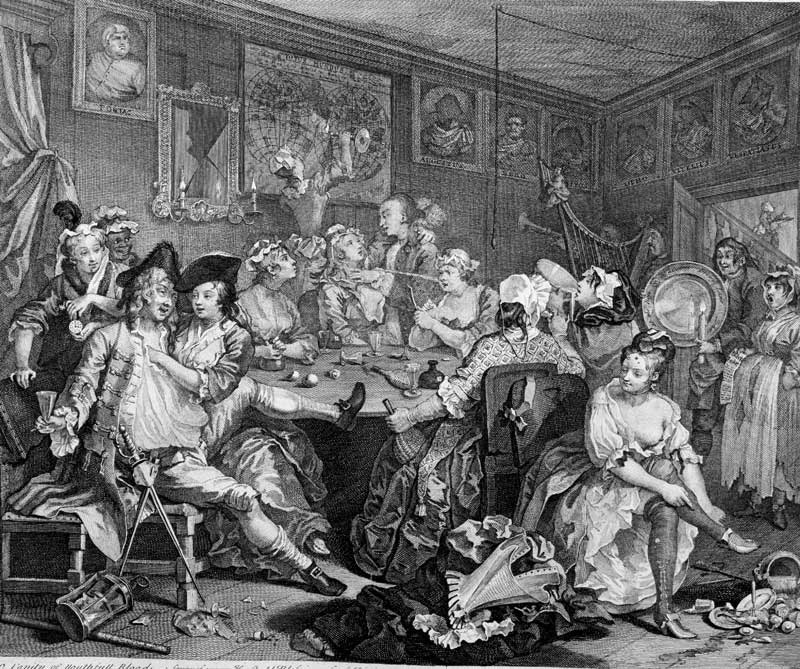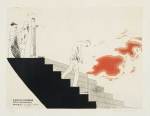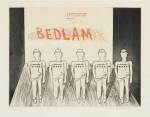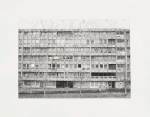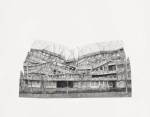The pursuit of progress gives momentum to modern life. Civilisation marches forward in an endless ascent of improvement and renewal, or so we are led to believe. Art often takes a different view, and dwells on the things that are left behind by progress, as Tate Britain’s recent ‘Ruin Lust’ exhibition demonstrated.
For Hogarth, progress takes place on a human scale, to individuals. Modernity promises the potential of social advancement and self-actualisation, but can just as easily result in ruination and disgrace. It was this irony that he exposed in the two sets of engravings with which he established his own reputation: A Harlot’s Progress published in 1733, and A Rake’s Progress in 1735. The titles allude to John Bunyan’s allegory of Christian salvation, The Pilgrim’s Progress, but for Hogarth’s protagonists the only way was down, in tales of moral, physical and mental decline told through sequential narratives not set in an allegorical world, but in the very real milieu of modern London.
A Rake’s Progress is now the subject of an exhibition at the Foundling Museum that marks the 250th anniversary of Hogarth’s death and the 10th anniversary of the museum. For the first time, Hogarth’s print series is shown alongside three contemporary responses: David Hockney’s A Rake’s Progress (1961–3), Yinka Shonibare’s Diary of a Victorian Dandy (1998) and Grayson Perry’s The Vanity of Small Differences (2012). These works are joined by a newly commissioned piece by Jessie Brennan.
The contemporary responses to Hogarth’s series collectively form their own ‘progress’, providing a shifting set of perspectives on today’s social values. Hockney’s is the most autobiographical, describing the adventures of a callow young artist visiting hedonistic New York for the first time. The progress here is towards a desired loss of innocence, but also towards social conformity.
By casting himself as the hero of Diary of a Victorian Dandy, Yinka Shonibare reverses the traditional order of representations of black people in art. The libertine aristocrat at the centre of an entourage of white servants and sycophantic attendants, he nevertheless seems to stand aloof from the costume-drama theatricality that surrounds him.
Grayson Perry’s enormous tapestries The Vanity of Small Differences are the highlight of the exhibition, and it is a pleasure to be able to see them up close in all their delicious detail. They are the most direct response to A Rake’s Progress, describing a rags-to-riches journey played out through the acutely observed manners, tastes and social pretensions that constitute British class distinctions.
By contrast, Brennan’s piece, entitled A Fall of Ordinariness and Light (The Enabling Power), is restrained, understated and a little disappointing. It is a sequence of four images of a block of flats – Robin Hood Gardens in East London. The building seems to be collapsing, but on closer inspection it turns out that it is the image, not the building, that is being crushed. It is in fact four drawings of a photograph of the building, and it is the photograph that is becoming progressively crumpled.
Brennan’s work has a simple narrative and no central protagonist, and avoids the ironic references and witty social analysis of the other progresses. She is self-consciously not playing the game, not joining in with the boisterousness of Hogarth, Hockney, Shonibare and Perry.
It is understandable that Brennan should wish to chart her own course with this commission, and to create a more subtle observation on the nature of progress. For her, progress is the false utopia that the brutalist housing estate, designed in the late 1960s, once offered, but also the empty promises of improvement and ‘affordability’ contained within current plans for demolition and redevelopment. The layering of media in the work – architecture, photography and drawing – allude to differing standards of truth-telling in image making. Her photo-realist drawings document the human accretions and lived-in condition of the flats that now disrupt the idealised visions of the architects’ designs and the planners’ intentions.
Brennan’s work widens the scope of what is meant by progress in the exhibition, to examine the ideological basis of the drive for economic growth and the effect this has on communities. But it is the critique of social performances and pretensions that gives Hogarth’s A Rake’s Progress its continuing relevance.
‘Progress’ is at the Foundling Museum, 40 Brunswick Square, London until 7 September.

